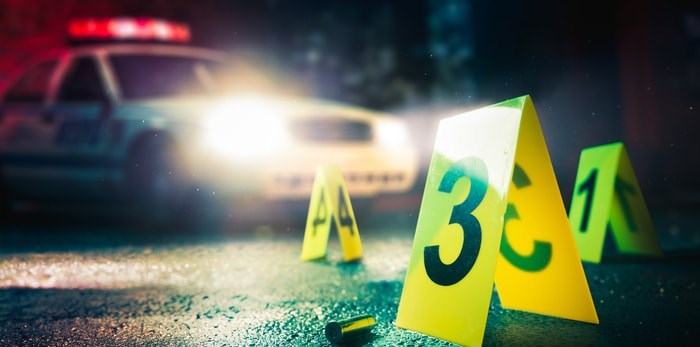 Crime scene/Shutterstock
Crime scene/Shutterstock
The summer of 2019 has been a challenge for law enforcement authorities in Canada’s largest city. During the August long weekend, at least 17 people were injured in 14 different shootings that Toronto Police Chief Mark Saunders blamed on “street gangs.” Canada’s situation is, thankfully, different from what has transpired in the United States on account of a convenient interpretation of the Second Amendment.
British Columbia has not been immune to gang-related violence. The particularly infamous “Surrey Six” incident in October 2007 led to many discussions about the intricacies of the justice system. In September 2018, Research Co. found that 79% of British Columbians support a ban on handguns within the limits of their municipality.
In July, Research Co. found that “crime and public safety” is the most important “vote-defining” issue for only 4% of Canadians in this year’s federal election, but the numbers rise slightly to 6% in British Columbia – the highest in all provinces. This may not seem like much, but we can still expect campaign announcements issued from lecterns emblazoned with phrases like “building safe communities.”
Measuring public sentiment on criminal activity can be a complicated endeavour. Residents need to be asked about collective perceptions and their individual reality, as well as their views on fear, safety and the factors that may lead to crime in the first place.
When Research Co. recently asked British Columbians about this matter, one in five residents (20%) reported that, over the past four years, they have been the victims of a crime in their community where the police were called in (such as an assault or a car break-in). Metro Vancouver has the highest incidence on this question at 22%, while Vancouver Island has the lowest at 17%.
But while four in five British Columbians have not experienced incidents that required alerting the authorities, the notion that lawlessness is rising lingers. Across the province, 41% of residents say that the level of crime in their community has increased in the past four years.
This time, the regional numbers take a dramatic turn. In two areas – southern B.C. and the Fraser Valley – a majority of residents believe that crime has increased (56% and 54% respectively). In Vancouver Island and Metro Vancouver, perceptions are significantly better (38% and 37% respectively).
Across the province, 40% of residents say they fear becoming a victim of a crime in their community “a great deal” or a “fair amount.” This time, Metro Vancouverites are the ones that drag the provincial average upward, with 43% experiencing this anxiety. The proportion is lower in all other regions, dropping to a B.C.-wide low of 30% on Vancouver Island.
Islanders confirm their stature as the safest residents on a question related to a specific activity. Only 22% of those living in Vancouver Island say they would feel “unsafe” walking in their own neighbourhood after dark, compared to a provincial average of 31%. northern B.C. is highest on this indicator (37%).
The survey shows that there are challenges for the provincial government and municipal administrations on this particular issue. Aside from Vancouver Island, every region of the province has different concerns that move the needle.
In southern B.C. and the Fraser Valley, more than half of residents are adamant that criminal activity has increased. Northern B.C. residents are the most likely to feel unsafe walking alone at night. Metro Vancouverites are more likely to have filed a police report, and also more likely to fear becoming victims.
When asked about the factors that are to blame for the current state of affairs, the top responses from British Columbians are “addiction and mental health issues” (45%), “gangs and the illegal drug trade (32%), an “inadequate court system” (24%) and “poverty and inequality” (23%).
Residents of the Fraser Valley point their fingers primarily at “gangs and the illegal drug trade” (53%), while residents of southern B.C. and Metro Vancouver select “addiction and mental health issues” (49% and 44% respectively).
In any case, there are two issues that do not resonate loudly. Only 13% of residents think “insufficient policing and a lack of resources to combat crime” is an issue that needs to be desperately addressed. Even fewer (9%) choose to blame “immigrants and minorities” when provided with the opportunity to do so.
On the factors question, there are no major political differences among British Columbians. More than two in five of those who voted for the BC NDP (46%), the BC Liberals (also 46%) and the BC Green Party (44%) in the 2017 provincial ballot believe addressing “addiction and mental health issues” will help immensely to bring down both the incidence of crime, and the perceptions of residents.
Results are based on an online study conducted from August 7-10, 2019, among 800 adults in British Columbia. The data has been statistically weighted according to Canadian census figures for age, gender and region in British Columbia. The margin of error, which measures sample variability, is plus or minus 3.5 percentage points, nineteen times out of twenty.


